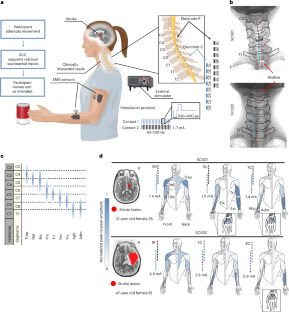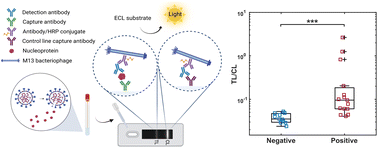2023-03-07 ピッツバーグ大学
この研究では、患者の腕や手を強化するために脊髄を刺激することで、患者の腕や手の機能を向上させ、治療後も継続的に改善されることがわかった。これにより、脳卒中の治療において、より望ましい結果をもたらす可能性があるという。
<関連情報>
- https://news.engineering.pitt.edu/spinal-cord-stimulation-instantly-improves-arm-mobility-after-stroke/
- https://www.nature.com/articles/s41591-022-02202-6
脳卒中後の上肢麻痺に対する頸髄硬膜外刺激療法について Epidural stimulation of the cervical spinal cord for post-stroke upper-limb paresis
Marc P. Powell,Nikhil Verma,Erynn Sorensen,Erick Carranza,Amy Boos,Daryl P. Fields,Souvik Roy,Scott Ensel,Beatrice Barra,Jeffrey Balzer,Jeff Goldsmith,Robert M. Friedlander,George F. Wittenberg,Lee E. Fisher,John W. Krakauer,Peter C. Gerszten,Elvira Pirondini,Douglas J. Weber & Marco Capogrosso
Nature Medicine Published:20 February 2023
DOI:https://doi.org/10.1038/s41591-022-02202-6

Abstract
Cerebral strokes can disrupt descending commands from motor cortical areas to the spinal cord, which can result in permanent motor deficits of the arm and hand. However, below the lesion, the spinal circuits that control movement remain intact and could be targeted by neurotechnologies to restore movement. Here we report results from two participants in a first-in-human study using electrical stimulation of cervical spinal circuits to facilitate arm and hand motor control in chronic post-stroke hemiparesis (NCT04512690). Participants were implanted for 29 d with two linear leads in the dorsolateral epidural space targeting spinal roots C3 to T1 to increase excitation of arm and hand motoneurons. We found that continuous stimulation through selected contacts improved strength (for example, grip force +40% SCS01; +108% SCS02), kinematics (for example, +30% to +40% speed) and functional movements, thereby enabling participants to perform movements that they could not perform without spinal cord stimulation. Both participants retained some of these improvements even without stimulation and no serious adverse events were reported. While we cannot conclusively evaluate safety and efficacy from two participants, our data provide promising, albeit preliminary, evidence that spinal cord stimulation could be an assistive as well as a restorative approach for upper-limb recovery after stroke.


